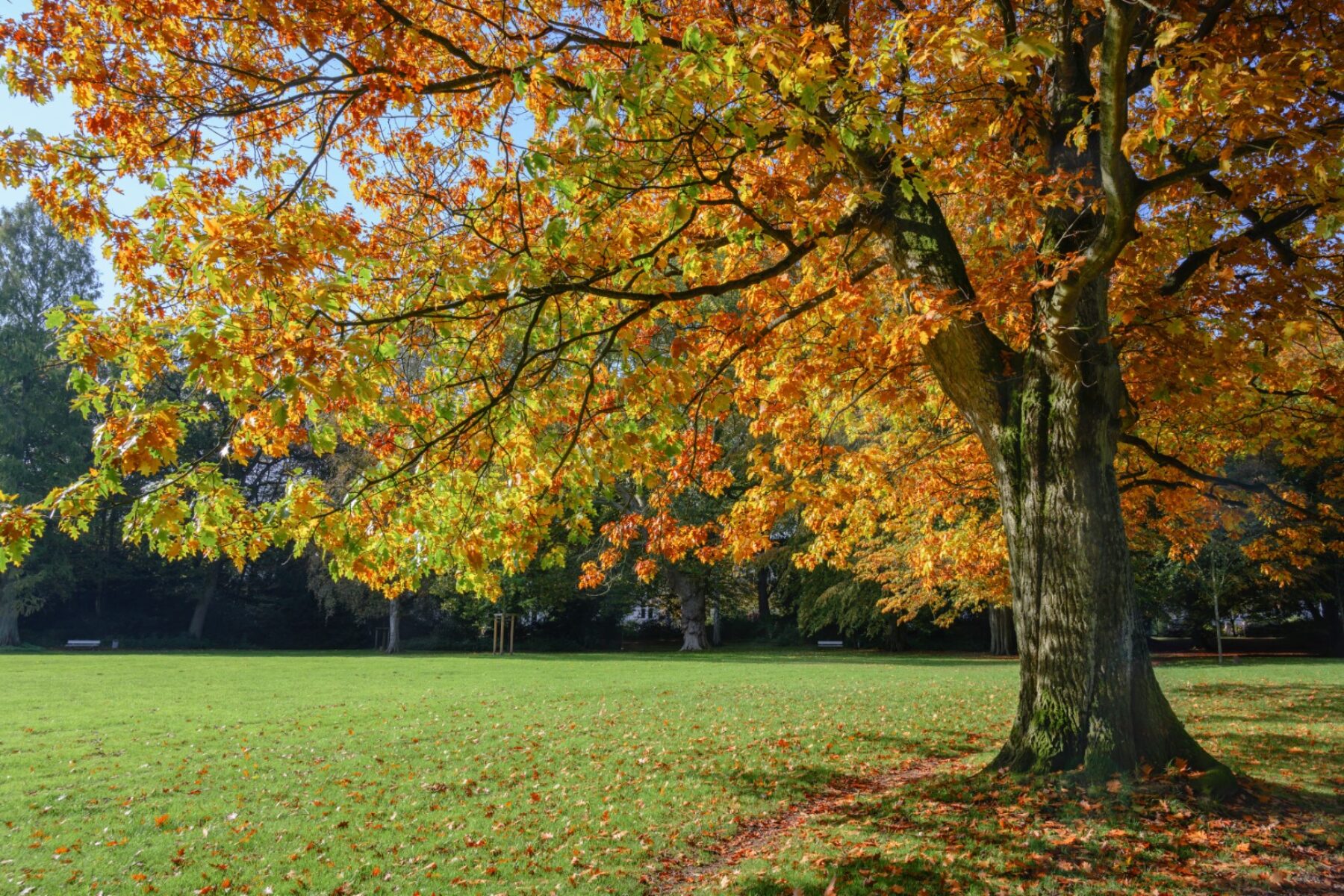
Mulching Around Trees Before the First Snowfall
As fall progresses and temperatures begin to dip, it’s the ideal time to give your trees the protection they need to survive Minnesota’s harsh winters. One of the most effective and often overlooked steps is late-season mulching.
When done properly, mulching helps trees maintain moisture, insulate roots against freeze–thaw cycles, and minimize stress through dormancy. But beyond short-term protection, it also plays a key role in long-term tree maintenance, supporting healthier root development and reducing the likelihood of future issues like storm damage, root exposure, or decline.
Why Mulch Matters in Late Fall
Tree roots remain active even after leaves fall, making them vulnerable to frost heaving—when freeze–thaw cycles push roots upward. A well-placed mulch layer helps insulate the soil, reducing this risk. It also conserves soil moisture when the ground is frozen, helping trees avoid dehydration stress.
According to the University of Minnesota Extension, applying mulch in fall is especially important to moderate soil temperature and protect roots during winter.
When to Mulch in the Twin Cities
The ideal time to mulch is late October through early November, just after trees have gone dormant but before the ground fully freezes. Applying mulch too early may trap excess moisture or attract pests, while waiting too long reduces its effectiveness as an insulator.
A good rule of thumb: apply mulch before the first consistent snowfall, but after most leaves have dropped.
How to Mulch Trees Correctly
To avoid causing damage, mulch should be applied with care:
- Remove old mulch or grass from the base of the tree
- Spread a 2–4 inch layer of organic mulch (shredded wood, bark, or leaf mulch)
- Keep mulch 3–6 inches away from the trunk to avoid rot and rodent activity
- Extend the mulch ring as far out as the dripline, if possible
The University of Minnesota Extension and the Minnesota DNR both recommend avoiding the “mulch volcano”—a common but harmful practice where mulch is mounded against the trunk. Instead, follow the 3–3–3 rule: 3 feet wide, 3 inches deep, 3 inches away from the trunk
Which Trees Should Be Mulched?
Mulching is beneficial for nearly all trees, but especially important for:
- Newly planted trees (within the past 2–3 years)
- Shallow-rooted species, such as maples and birches
- Trees near driveways or sidewalks, where reflected heat or salt stress is common
- Trees exposed to wind or in open areas with little snow cover
These trees are more susceptible to root stress and frost damage, and mulch can provide a protective buffer.
Common Mulching Mistakes to Avoid
Recommended Practice | What to Avoid |
| Use 2–4 inches of organic mulch in a wide “donut” shape | Piling mulch against the trunk (“mulch volcano”) |
| Keep mulch 3–6 inches away from the trunk | Letting mulch touch or cover the bark |
| Refresh mulch annually with clean, decomposed material | Using deep or compacted mulch that traps moisture |
| Mulch to the dripline when possible | Applying too narrowly around only the base |
| Use wood chips, bark, or healthy leaf mulch | Avoid plastic or rubber mulch around trees |
Need Help Preparing for Winter?
While mulching may seem like a minor task, it plays a powerful role in your tree’s long-term health. Done correctly, it helps regulate soil temperature, protect roots, and conserve moisture during the coldest months. Over time, these benefits translate into stronger root systems, more resilient trees, and fewer costly issues related to storm damage or decline.
Give your trees a better shot at long-term health and stability. Apply mulch now—before the snow falls—and make winter maintenance part of your larger landscape care strategy.